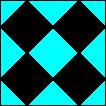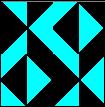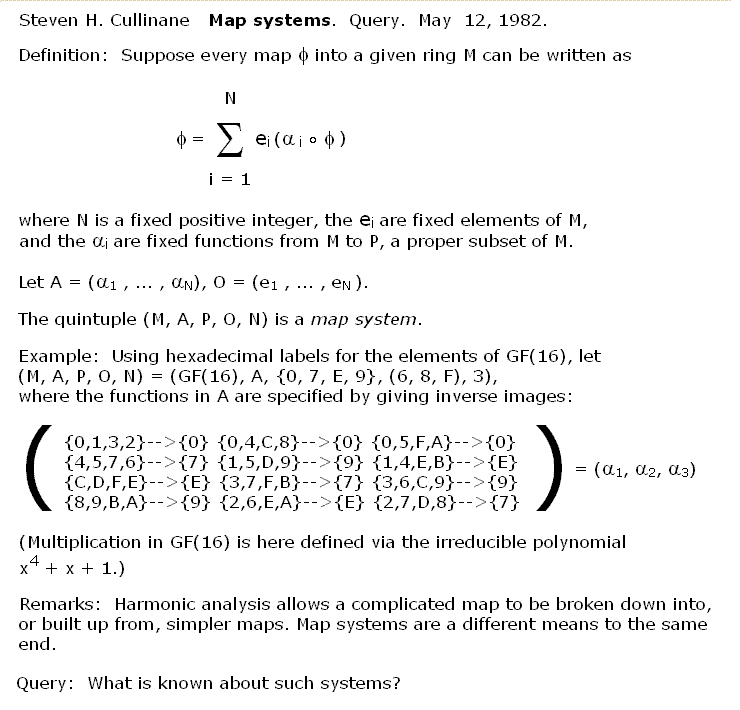In the 4x4 case of the diamond theorem, we regard the four-diamond figure D at left, below, as a 4x4 array of two-color diagonally-divided square tiles. Let G be the group of 322,560 permutations of these 16 tiles generated by arbitrarily mixing random permutations of rows and of columns with random permutations of the four 2x2 quadrants.
THEOREM: Every G-image of D (as at right, below)
has some ordinary or color-interchange symmetry.

D
Let e denote transposition of the first two rows, f denote transposition of the last two columns, g denote transposition of the top left and bottom right quadrants, and h denote transposition of the middle two columns. Then Defgh is as at right. Note that Defgh has rotational color-interchange symmetry like that of the famed yin-yang symbol.

Defgh
G is isomorphic to the affine group A on the linear 4-space over GF(2). The 35 structures of the 840 = 35 x 24 G-images of D are isomorphic to the 35 lines in the 3-dimensional projective space over GF(2). Orthogonality of structures corresponds to skewness of lines. We can define sums and products so that the G-images of D generate an ideal (1024 patterns characterized by all horizontal or vertical "cuts" being uninterrupted) of a ring of 4096 symmetric patterns. There is an infinite family of such "diamond" rings, isomorphic to rings of matrices over GF(4).
For a movable JavaScript version of these 4x4
patterns, see
The Diamond 16 Puzzle.
